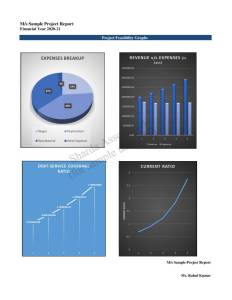Project Report For Namkeen or Snacks
Introduction
Project report for Namkeen or Snacks is as follows.
A snack is a small food serving typically consumed in between meals. Snacks can be prepared at home using fresh ingredients or they can be packaged snack foods and other processed meals.
The name “namkeen” refers broadly to the salty snacks that are traditionally eaten in South Asian countries. These snacks can be made from a variety of ingredients, including whole legumes like green peas, chickpeas, peanuts, cashews, moong dal, lentils, and dough-based extruded goods.
Snack foods are typically designed to be quick, portable, and filling. Processed snacks are a form of convenience food that is designed to be more durable, transportable, and less perishable than homemade snacks.
They usually contain large amounts of sweets, preservatives, and alluring ingredients like chocolate, peanuts, and specially crafted flavors (such as flavored potato chips).

There are many different brands of namkeen or snacks available on the market, most of which cater to traditional snacks like pakoras, samosas, and bhujia. Large snack companies like Parle, Balaji Wafers, ITC Foods, Britannia Industries, Haldiram Snacks, etc. are examples of large snack companies that have acquired numerous smaller snack brands. By adding new product lines, these larger snack companies are able to increase their share of the snacks market.
The snack market size and snack income growth are predicted to climb by 25% yearly, and the snack sector in India is expanding more quickly than the snack market.
As a result of increased investment by snack producers in snack research and development, new product creation, branding of snack goods, and entry into more niche areas, the snack sector has experienced great growth.
Over the past several years, a lot of fresh snack food startups have also emerged, providing professionals and business owners with new options to manufacture snacks.
Market Potential Of Namkeen or Snacks
The Indian namkeen or snacks market is anticipated to increase by $2.88 billion between 2022 and 2026, with a CAGR of 7.73%.
The primary drivers of the market include an increase of retail space in Tier II and Tier III Indian cities as well as shifting consumer preferences.
According to the analysis, the rising demand for high-protein snacks would be one of the primary drivers of namkeen market growth in India over the next years.
The snack market in India is estimated to be worth Rs. 44,000 crores and the top 10 snack companies in India account for 80% of the snack items or snack brands marketed.
According to industry sources, because snacks are packaged and sealed tightly, they have a 50% longer shelf life than other types of snacks. Additionally, snack manufacturers offer a wide range of snacks, including nankeen (savory) bhujia, Okumura, and traditional crispy papdi, pakoras, and samosas.
These snacks have a very long shelf life of six months to five years, depending on the type of snack that the manufacturer makes.

The snack market in India is rising multiple times annually, and the snack sector is rapidly expanding. Due to the intense competition among snack companies, the hyper-growth of the snack market has sparked innovation in product development, the expansion of a distribution network, and price promotions.
Additionally, customers who purchase snacks on impulse do so. When buying snacks from convenience stores or shopping for groceries, you can use goods from retail stores as a snack.
Additionally, snack producers make new snacks by making minor adjustments to a current snack product’s components, packaging, shape, or form.
Project Report Sample On Namkeen or Snacks
Need Help?
Create 100% Bankable Project Report





